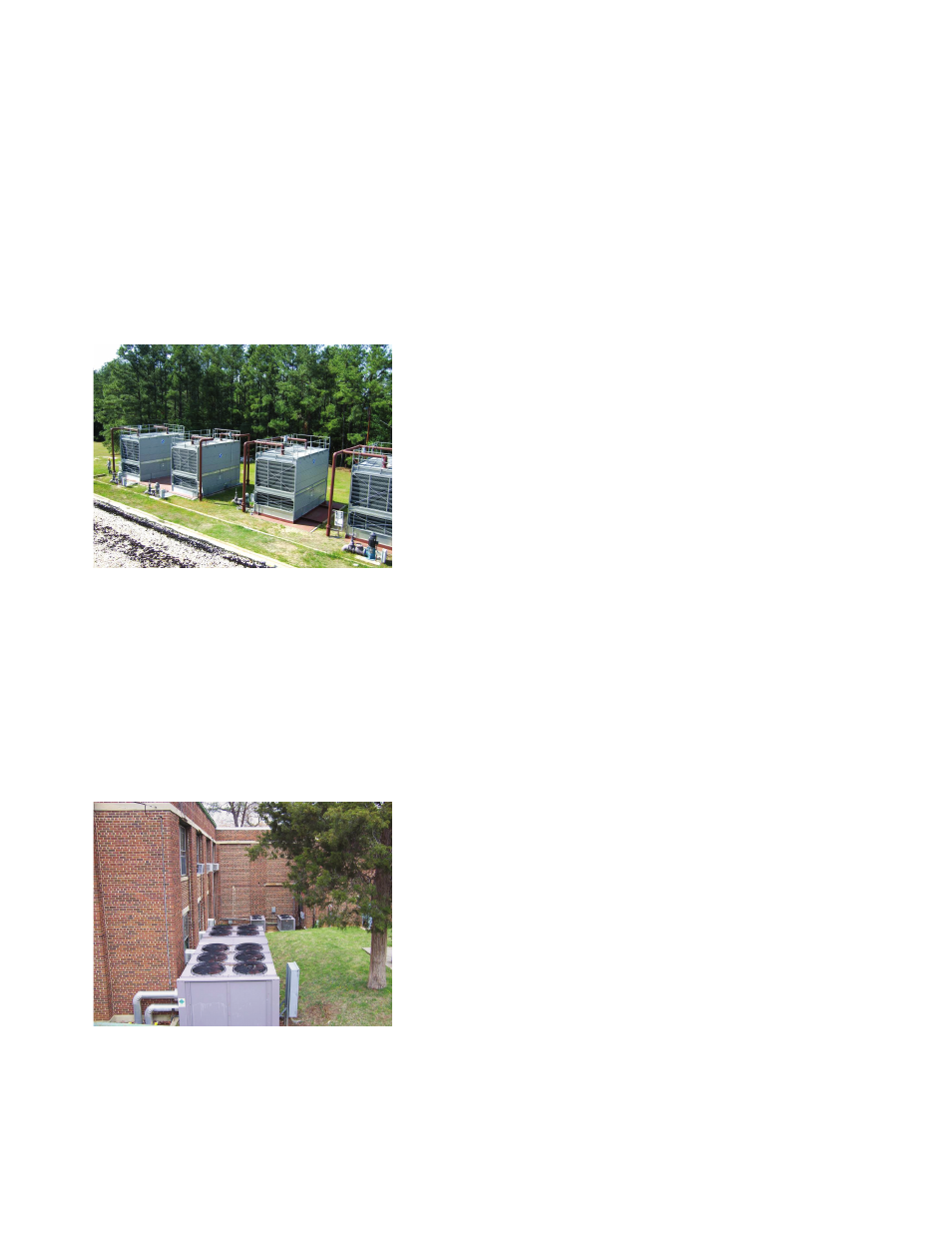Retrotec USACE User Manual
Page 197

Appendix D D67
the fans would be increased and if the temperature is too cool, air fl ow would
be reduced. An alternative to this method of operation would be to provide
condenser water that is as cool as possible by running the fans at maximum
air fl ow. With a cooler condenser water temperature, the chiller will operate
more effi ciency—approximately 0.5% effi ciency improvement with a centrifu-
gal chiller for each degree Fahrenheit condenser water temperature reduc-
tion. The improvement for a reciprocating compressor chiller is approximately
2% for each degree Fahrenheit condenser water temperature reduction. This
energy saving would need to be compared with the extra fan horsepower used
to deliver greater air fl ows. There is also a minimum condensing temperature
at which the chiller can effectively operate (approximately 13 °C (55 °F)).
Figure D116. Cooling towers for chilled water
plant showing fans and pumps.
D.4.2.7 Use of Air-Cooled Chiller Equipment (Ineffi ciency)
Air-cooled chillers have condensing temperatures 7–12 °C (10–20 °F) higher
than water-cooled chillers (Figure D117). As a result, they normally have a
larger compressor for the same cooling output. Their energy use is also slightly
higher than that of water-cooled equipment. Consider the use of water-cooled
chillers to replace air-cooled units, especially if a chiller is nearing the end of
its useful life.
Figure D117. Window air conditioners and air-
cooled chillers providing cooling to a building.
D.4.2.8 Use of Oversized Equipment (Ineffi ciency)
The use of cooling equipment that is too large for the application results in a
large percentage of the operating hours at low equipment loads (Figure D118).
